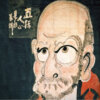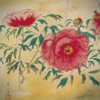Itō Jakuchū’s Paintings 001: Modern Times and Itō Jakuchū

Itō Jakuchū is a popular 18th-century painter of the Edo period who is well known to everyone and is known as a painter of eccentricity with a unique style of expression.
Today, art is valued by placing emphasis on the individuality of the artist and the artist’s unique style of expression. For this reason, Jakuchū’s unparalleled style of painting is receiving attention, not only for appreciation but also as a subject of research. However, the popularity of such an eccentric painter has not just now suddenly emerged. He was highly acclaimed and in the spotlight from the time he was alive, and his popularity continued into the Meiji period, leading to the publication of many ‘illustrations album’. The Jakuchū Gafu (’illustrations album of Jakuchū)was first published in 1890, when there were few art books published, and about a dozen more were published until 1926. In addition, as precision photographic printing flourished and publication increased during the pre-war period of the Shōwa era, Jakuchū paintings became widely used for design designs for crafts. And they became well known to the public. Even after the war, Jakuchū’s painting style always attracted attention among art students.
From the mid to late Meiji era, when the Rimpa paintings began to be taken up as a design motif, the Japanese art and craft industry experienced a major period of transformation. Following the government’s policy to modernize by imitating Western styles, Western art gained an advantageous position and began to dominate new theories of art. The concept of Western art, which places decorative art supreme, was applied to the interpretation of Oriental art, treating all aesthetically pleasing objects as works of art without distinguishing between decorative art and practical art, which had been the traditional approach in Japan. Western interpretation and expression were also required in Japanese painting, and new techniques were employed while traditional Japanese techniques were abandoned as outdated. Japanese art that was easy for Westerners to understand was acclaimed overseas. However, foreign artists warned against the Japanese cultural situation that was complacent about this.
In the early Meiji era, craft production in traditional art forms such as yūzen dyeing, ceramics, and lacquerwork became an export industry, and new education and economic benefits began to emerge among the general public, leading to an increased interest in high-end arts and crafts. As a result, production of art and crafts increased, and searching for past works became frequent.
Production of single items, which had been the main focus in craft production until then, was replaced by mass production, and with it came the need to develop new design concepts that utilized high-level technology. In particular, the world of the textile industry grew to support part of the country’s economy through domestic demand, with the popularization of high-end clothing for the common people and ceremonial clothing modeled after the old samurai style, widely used in weddings and social events since the Meiji Restoration. Many reference design books were published to produce such a huge amount of clothing.
During this period, Jakuchū’s paintings, which had been highly valued from the Edo period to the modern era, were not only appreciated as fantastic paintings, but also recognized as a source of inspiration for new or modern designs. They were greatly copied and used in the craft industry, such as in the production of yūzen dyeing.
In the West, there was a period of searching in the dark for ways to utilize Japanese Eastern art, just as the European Japonism movement that began in the late 19th century later led to the popularity of Art Nouveau. This coincided with the Art Deco movement, which had gradually evolved from Art Nouveau and was seeking new materials from Japanese art once again.
Furthermore, the United States, which had been content with Japanese souvenirs that satisfied its Oriental taste, also desired higher quality art and crafts.
These factors can be said to have coincided with the trend of Japanese art and crafts participating in the World’s Fair from the mid to late Meiji period, and both domestically and internationally had the same objective.
At this time, Jakuchū painting was greatly accepted as the discovery of a new style of oriental art, in line with Japan’s eagerness to expand into the rest of the world.
Jakuchū’s unique paintings were among the works of art that were targeted as new Japonism designs for Europe and America.










